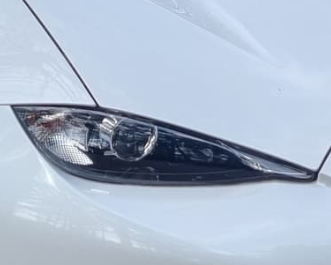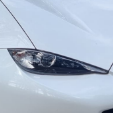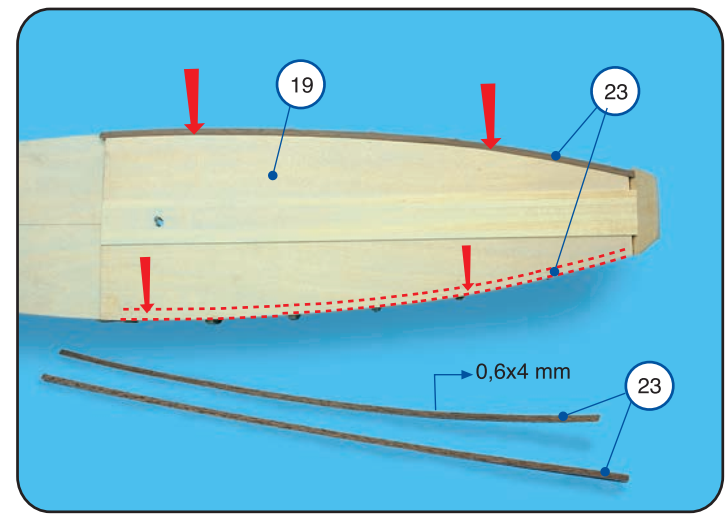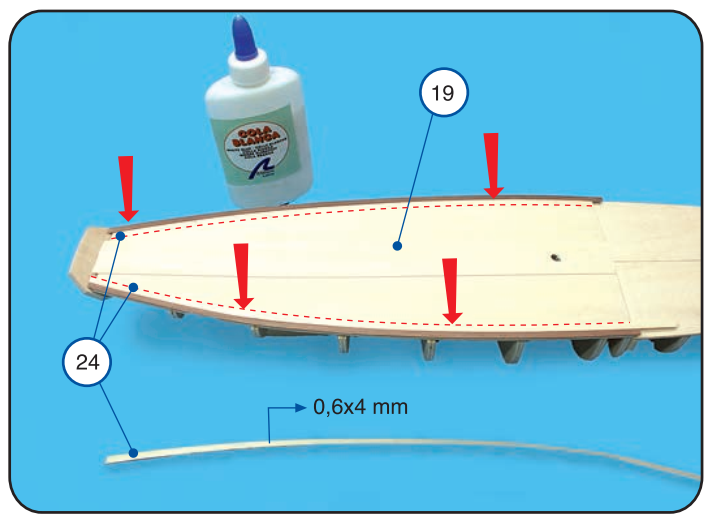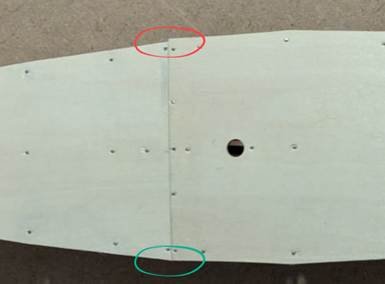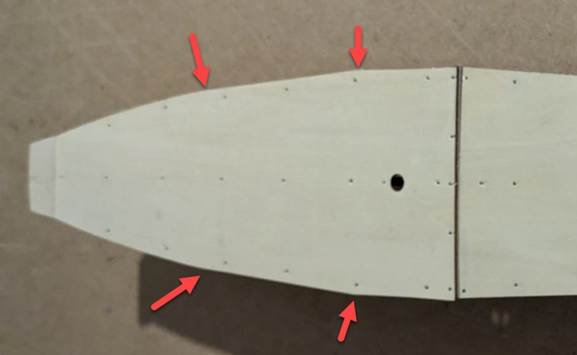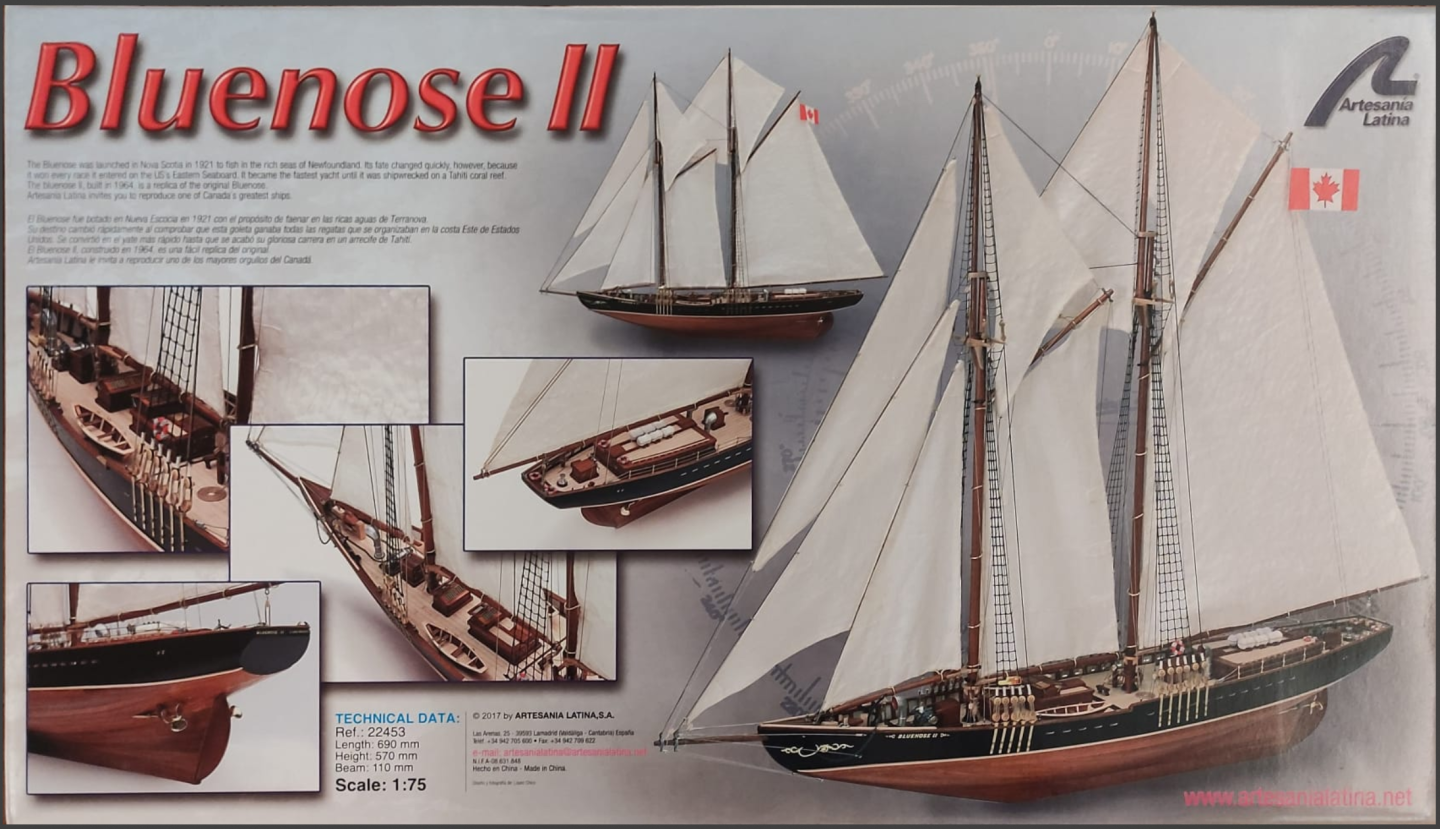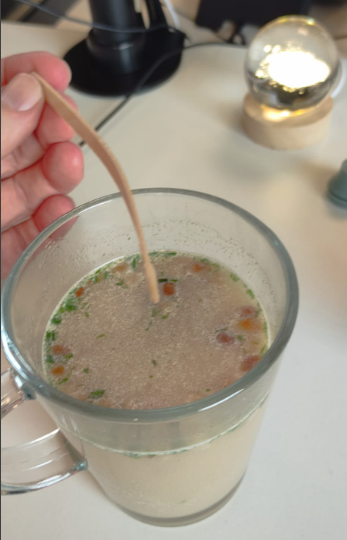-
Posts
23 -
Joined
-
Last visited
Content Type
Profiles
Forums
Gallery
Events
Everything posted by bnw
-
Planking the deck.... wondering how to start.... I am at the start of planking the decks, but I am wondering a few things, because of a small inacurrance in my work and a thing about the lasercut decks. Maybe I am thinking to much before actually start, but I would like to try to get the planking as symmetrical as possible. Next image is from the build log from @Penfold Bluenose II by Penfold - FINISHED - Artesania Latina - 1:75 When finmishing the planking, he noticed there was a small asymmetry in the pattern of the planks, because he sanded the contour of the deck after drawing the centerline, but before planking, as I did understand it well.: I hope to avoid that, but as a newbe, I have a small asymmetry in the position of the higher deck at the red arrow, because I was a bit inacurrate when assembling the frame. The hogher deck protrudes a maximum of 1 mm from the lower deck on one side. As per manual, next steps has to be made: Add 6 planks in around the centerline Add a walnut plank: And a basswood plank along the contour: Then fill in with the other basswood planks: And after a few other steps, sand the right shape in the bulkheads: But there are a few questions. At the red arrows, the higher lasercut deck has two obvious sharp points. Along the two green lines, the countour is a straight line and only the blue edge is curved. The walnut plank and later on the bulwarks will have to follow a nice curve. As told in the instructions, the curve will be sanded after placing the planks on the decks. That means, when attaching the outher plank, you need to stay inside the contour and will see the sharp points of the deck and other parts of the deck protruding, which will be sanded away at a later time: Another consequence of this is that the with of the walnut plank may vary because of the sanding. The other way might be to sand only the contour of the deck (not the bulkheads at his moment) to get the nice curve and place the outer walnut plank against this sanded curve. I can than sand and measure both sides as close as mirrored to get a nice symmetrical layout of the planks and draw the centerline after this. To be honest, the deviation between left and right is only in this incircled area; the rest is symmetrical: But I can imagine, because of the cutouts, a small asymmetrical area will be visible in asymmetrical cutouts/planking: The other thing is, because I will need to correct the little inaccuracy at the step from the lower to the highter deck, the hole of the mast will also be a little offset to the centerline (about 0,5 mm or <1 mm). So the lines between the planks will also be not completely symmetrical to the hole of the mast, but maybe that will be less visible? Can you guys tell me which way I can do this best? Or am I being too picky now and do I simply have to start planking? I hope I made my questions clear, but someone told me: ask before gluing!
-
Tnx guys for the interesting info! @Snug Harbor JohnnyLooks like an interesting book! thank you for the tip! @KenchingtonThank you so much for your story, I was really impressed by it. I have never been to Canada but hope to visit this beautiful country one day. I like that my first ship model is actually a Canadian ship. Reading a story from someone who lives there, who actually saw the Bluenose II and has been aboard her, really touched me. Especially what you told about the moment she passed by when you were aloft. When I started this hobby a few months ago, I didn't realize that building the model is only a small part of it. Talking with other enthusiasts, learning the history and specifications of the real ship, and listening to stories about her and the people around her, is at least as satisfying as the building itself!
-
Me too like the nice lines of the Bluenose! I think the shape of the hull will be nice to work on and to follow while sanding and planking. I have found the videos you mentioned. I have watched the first few minutes, and it looks like clearly spoken and explaining videos, so definite worth watching! Nice, you not only can spend a lot of time on building, but also on watching videos, tutorials, reading modelshipworld.com, etc....
-
The planking of the deck will need some bending of planks and this will be the first new thing to learn for me, so I am still looking into it first and I am investigating how to do this. The most outer plank is walnut: And the second row is basswood: the rest will be filled with straight planks: Is this the right way to do the bended planks: put the plank in (warm) water for a while. How long? A few minutes, an hour? Bend the plank and place it with clamps in the right position onto the deck. Let it dry in this bended position. After drying, take away the clamps, put some glue on the bended plank and position it back with clamps to let the glue dry. Will this work in this way?
-
Part II Planking the deck. Next thing is the planking of the deck. It consists of basswood and some walnut sheets. I have seen several methods of planking the deck, adding the caulking seams, imitating the nails. - I was thinking of using a pencil to add some caulking at the sides of the planks. - I also think not using complete planks in one piece (front to end), but devide them in shorter lengths to get a better scale. Do you have any tips how to get the best planked deck? Is a pencil a good way for the caulking? Can I get problems with stains from the graphite or how to avoid that? Do I have to use a soft pencil or a harder one? Use the same pva glue for wood? Other ideas and tips before I start with this step?
-
Part I – keel, bulkheads and decks I have already done some things, so this build log starts a few steps in the process. I have removed the lasercutted parts from the plywood sheets and sanded away the irregular spot where the parts were attached to the sheet. After dry fitting I glued the bulkheads to the keel. Because the laser cutting, the bulkheads were almost 90° to the keel without even using tools for it, but I decided to use the Lego brick method to ensure the right angle. Next step was attaching both the decks parts. I have used glue and nails. With a drift punch I made sure the nail heads did not stick out. I am actually quite happy with my first keel-bulkhead assembly! I only noticed one inaccuracy, which I was a little bummed that I had missed, but it is solvable when sanding the edges of the bulkheads to match the planks of the hull. There is a jump halfway down the deck. When you look at this point in the topview, the contour is interrupted at one side. I also noticed that the higher deck did not have a rounded/smooth contour shape, but it has two sharp edges. This is not a “fault” from me, but it was lasercutted that way. On this edge I have to add a walnut sheet, which will follow the contour. I suppose those have to follow a smooth rounded line, not the sharp edge? Following the instructions I have to add those walnut sheets first and sand the bulkheads later, but maybe it is wise to round the contour of the deck before adding the walnut sheet? At the same time I can also correct my small inaccuracy.
-
I am new to building wooden ship models and keeping a build log, but after making the first steps, i discovered, it will be helpful to ask some questions now and than to people with more experience! And because those will be small questions sometimes and maybe not worth it to create a complete, separate topic for, I decided to start my own build log and hope some people might read it and can help me, when I am stuck or hesitate the next step! Some words about me: I am living in The Netherlands, somewhere in my 50s 😋and whole my live, I liked to build and create things, do all kind of handcrafts, electronic projects, make drawings and so on. this continued in my work as an Industrial Product Designer. Things I did: plastic model airplane and car kits, styropor sailboats, RC airplanes and gliders, model railway, and so on.... but I have never built a wooden ship! I think it will be quite a challenge, but on the other hand, you just have to do new things to learn them! My goal is not to make a ship that has to be 100% accurate in detail as the original, but a model that looks nice and giv me a lot of fulfilment when building. I have chosen to build the Bluenose II from Artesania Latina. I like the the slender hull and definitally wanted a model ship where I have to do and learn planking of the hull! I have already delved a bit into the history of this ship and have watched several videos of this still sailing ship. Reading articles on the internet gave this intro on this ship: The Bluenose II is a famous schooner and a proud symbol of Nova Scotia, Canada. She is a faithful replica of the original Bluenose, a legendary racing schooner and fishing vessel. Currently, the Bluenose II serves as a goodwill ambassador and a training vessel, maintaining the maritime heritage of the region. As said, the kit is from Artesania Latina, scale 1:75 I cannot say if this is a good quality kit, but some people told me, they are okay. I do not know how long it will take for me to complete this kit, but I do not set any deadlines. I will take the time and try as much as possible to enjoy building it! I will also have to learn a lot of new words, because this is a completely new jargon for me!
-
I have seen this tool several times and I was wondering if it is wise to buy one! But I didn't know how it is used: do you simply push the nail in the wood with this tool? Or do you have to predrill a (smaller) hole? And what do you do to get the nail head flush with the planks? Or do you sand/file the head away afterwards? I have seen also a lot other ways to do the planking, without the nails and with several sorts of clamps or rubber bands... What are the advantages and disadvantages of using nails? In the meantime, the kit is delivered and I have started placing the first supports on the false keel.
-
Tnx, I have some fast drying glue from Bison, so I will try that one. Good advice about the sanding sticks!
-
I have PVA glue, a fast drying one (4 minutes), but there is also a variant which takes a lot more time. Is it advisable to use the fast drying glue for the planking? Or is it better to pick the slower drying one and give it more time to dry?
-
Now I am waiting for the kit to arrive (will take up to a week), I am inventorizing which tools I have to buy. I don't think I will buy all the necessary tools right at the start. I want to begin with the tools I need for building the frame and planking the hull, and I will acquire the rest when I need them during the build. What I already have: Steel ruler Several knives (Hobby blade, snap-off knife) Cutting mat Several pliers and cutters Marine Triangle Try Square Headband Magnifier What I would like to buy to start with: Needle files Sandpaper (which grits?) Sanding block, sanding bars, any advice? Pin vise to hold the drills with several size drills Glue, any advice? Small glue clamps, other clamps, paper clamps, any advice? Other? Or did I miss a sticky post with needed and adviced tools? Are you guys interested if I start a build log, even though there will be quite some time between the updates/posts, because I expect to take my time?
-
Well, I have just ordered the Bluenose II from Artesania Latina! I have found and read some more nice and very detailed build logs, some of them from people where this kit was also their first wooden ship project. I surely will meet difficulties and challenges, but I will take enough time (no deadlines), will check the existing build logs and will ask for help on this forum, if I didn't find an answer somewhere. I think, with this, and a lot of patience, I will manage to build the ship and most of all, I will also learn a lot! Now, waiting for the kit to arrive and order the first missing necessary tools. And of course, the right glue....
-
Even before buying a kit, I was drinking a hot soup in a glass with a wooden stirring rod and suddenly, as I was looking closely to this rod...... I noticed I was practicing in bending planks unconsciously, without even realizing it 😁
-
Thank you all for your warm welcome! I understand it is difficult to advise someone when you don't know hers or his skills. And for me it is a bit difficult to estimate which ship will be doable because I have to build my first ship yet.... But all advice is helpful and the existing build logs are great. And yes, when starting to build it may be wise to start my own build log. Because the building will take some time, it can also take a while for new episodes in my build log, but on the other hand, I am probably not the only wo may take it easy and will take a lot of time, so I can learn and get the nicest result as possible. But a building log will hopefully results in help from others and good advice. As others say: better ask questions first before gluing! I will take a look at the Vanguard models if there is a model I like and if they are sold overhere.
-
Thank you! Thinking about it, centuries ago, we met new friends whole over the world by sailing the big oceans with nicely crafted ships, nowadays we make new contacts worldwide by contributing to a forum about building models from those same ships!
-
Haha, tnx! On another forum they were only discussing that almost no young people do this kind of work/hobby, but with my age I cannot change that!
-
Hi you all, greetings from The Netherlands! I am thinking of entering this beuatiful hobby of wooden ship building. I am 52, but from childhood always busy with all sorts of craftwork, drawing, and so on. Plastic model kits, RC planes, electronics, etc. At home, I also do most of the maintenance and work myself. I work as an Industrial Product Designer and regularly make prototypes of my new designs. So I am used to all kinds of materials, tools and different work. But I am new in wooden Ship modelling and I am aware that I will have to learn a whole lot and will make mistakes when building my first ship (end second, and third....) But I think I will manage to learn this great hobby! I also like to do small and precise work and my (first) project does not need to be finished within a few weeks, so I will not set deadlines! Just enjoy, learn and be amazed by the designs of great ships, build during the history! I know, If I ask what the best beginners ship will be, several different opinions can lead to several different ships. The last weeks I have read a lot of Forum threads, here and on other forums. I already learned a lot of that and I am sure, I'm sure I will use a lot of those threads and build logs, when starting to build on my own. I know it is important to start building a kit, which is doable, but I find it also important to build a ship which I like by design. Because that is one of the motivations to build it. At the moment, I am looking for 2 or 3 kits: - Mantua Arm 82 - Artesania Latina Bluenose II - Artesania Latina Harvey The Arm 82 is a nice piece of Dutch ship history. I have read several times, that this is a great kit to start with. The hull does not need to be planked. That will be a bit easier, but actualy I would like to learn planking also..... Even if the Arm 82 is a great ship, I really like the design of ships like the Pen Duick and the Bluenose II more (I know, both are not exactly the same). So I am also interested in the AL Bluenose II. It is not mentioned as a beginnersship, but I have read several build logs where this kit was the builders first one to build. It has a double layer planking. So I can practice planking twice with this ship! And am I right that a double layer is a bit easier for the final finish because the final layer has a better surface (of course if you put enough effort in the first layer). How do you feel about this? Other alternatives with about the same design as the Bluenose, same kind of ship?
About us
Modelshipworld - Advancing Ship Modeling through Research
SSL Secured
Your security is important for us so this Website is SSL-Secured
NRG Mailing Address
Nautical Research Guild
237 South Lincoln Street
Westmont IL, 60559-1917
Model Ship World ® and the MSW logo are Registered Trademarks, and belong to the Nautical Research Guild (United States Patent and Trademark Office: No. 6,929,264 & No. 6,929,274, registered Dec. 20, 2022)
Helpful Links
About the NRG
If you enjoy building ship models that are historically accurate as well as beautiful, then The Nautical Research Guild (NRG) is just right for you.
The Guild is a non-profit educational organization whose mission is to “Advance Ship Modeling Through Research”. We provide support to our members in their efforts to raise the quality of their model ships.
The Nautical Research Guild has published our world-renowned quarterly magazine, The Nautical Research Journal, since 1955. The pages of the Journal are full of articles by accomplished ship modelers who show you how they create those exquisite details on their models, and by maritime historians who show you the correct details to build. The Journal is available in both print and digital editions. Go to the NRG web site (www.thenrg.org) to download a complimentary digital copy of the Journal. The NRG also publishes plan sets, books and compilations of back issues of the Journal and the former Ships in Scale and Model Ship Builder magazines.

